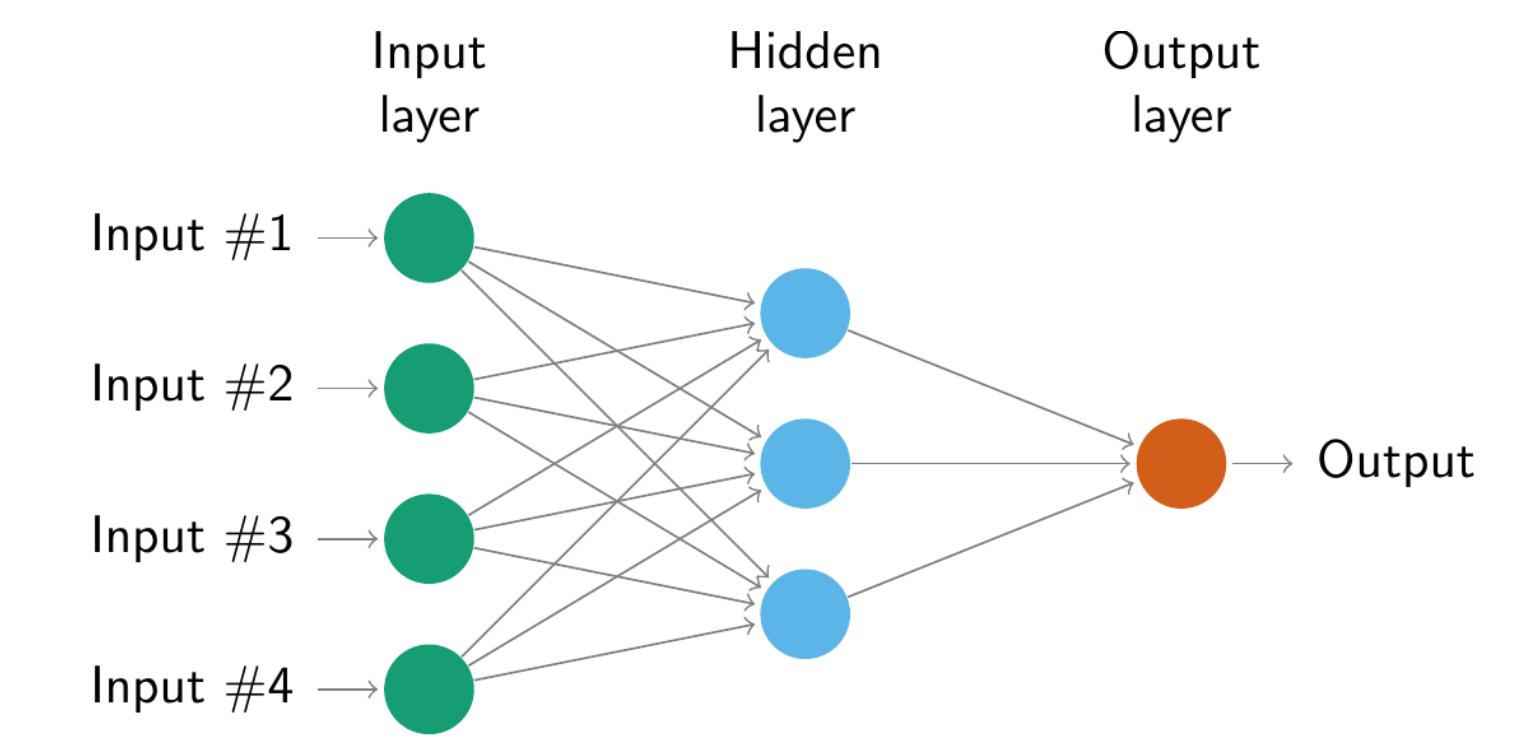12.4 Neural network models
Example of a multilayer feed-forward network.
Each layer of nodes receives inputs from the previous layers.
The outputs of the nodes in one layer are inputs to the next layer.

\[z_j=b_j+\sum_{1}^n{w_{i,j}x_{i,j}}\]
\[s(z)=\frac{1}{1+e^{-z}}\] The weights starts with an assigned random value, and then updated using the observed data.
The model is neural network auto-regressive model \(NNAR(p,k)\) where p are lagged inputs and k the nodes in the hidden layer.
\(NNAR(p,0)\) model is equivalent to an \(ARIMA(p,0,0)\) While \(NNAR(p,P,k)_m\) is a model with more layers and it is equivalent to \(ARIMA(p,0,0)(P,0,0)_m\)
The default value for k is \(k=(p+P+1)/2\)
12.4.1 Case Study 6
Sunspots, dark spots on the sun surface, follow a cycle of length between 9 and 14 years.
## # A tsibble: 6 x 2 [1Y]
## index value
## <dbl> <dbl>
## 1 1700 5
## 2 1701 11
## 3 1702 16
## 4 1703 23
## 5 1704 36
## 6 1705 58## Warning: Removed 9 rows containing missing values or values outside the scale range
## (`geom_line()`).## Warning: Removed 9 rows containing missing values or values outside the scale range
## (`geom_point()`).## Warning: Removed 9 rows containing non-finite outside the scale range
## (`stat_bin()`).
Forecasting neural network time series is an iterative procedure, and might take a while to compile.
\[y_t=f(y_{t-1},\epsilon_t)\]
